|
|
|||
|
(Back to Preceding Week; on to Next Week) |
|
|
|
TO JOHN MUIR:
Back in 2003 we made our first-ever trip to San Francisco to give a paper at an international meeting of the American Geophysical Union. While there we were graciously hosted and chauffeured around the Bay Area by Newberry College roommate and lifelong friend Doug Dietz who took us--among other places--to a very special locale: A stand of towering Coast Redwoods in a 560-acre preserve known as Muir Woods National Monument, named for 19th century naturalist John Muir (above). Although our first experience with these giant trees was exciting and inspirational, it's hard to describe what it's like to look up at a plant taller than the length of a football field and older than Christianity. Thus, we can only suggest you go west and see for yourself.
All text & photos © Hilton Pond Center We've just returned from our second trip to northern California, this time for a triennial Dressler Family Reunion--wife Susan's side of the family--and some sightseeing in the area. We again hobnobbed with Doug Dietz (including a few hours tossing a Frisbee, our favorite collegiate pastime) and then met up with Doug's wife Fonda for a tour of the area near their Crockett CA home. En route we went to Martinez CA for a stop at John Muir National Historic Site (above), which includes the home and farm where Muir spent most of his adult life and from which he conducted many of his environmental campaigns. Perhaps the most important of these were his efforts to protect western U.S. wilderness areas that became the nexus for expanding the country's national park system. Without Muir's tireless work, places like Muir Woods and Yosemite and even eastern locales such as the Great Smokies might have been lost forever due to logging, mining, grazing, and other commercial interests. For protecting these wild places, every American citizen owes John Muir a sincere vote of thanks. John Muir, born 21 April 1838 in Scotland, was 11 when his parents brought the family to Portage, Wisconsin to start a new life in farming. He eventually enrolled at age 22 in the University of Wisconsin at Madison where a lesson on legumes stimulated his interest in nature and the out-of-doors. In the autumn of 1867 Muir set out on an improbable journey from Indiana to Florida chronicled in his first book--A Thousand-Mile Walk to the Gulf. Upon contracting malaria at his destination, Muir cancelled plans to go on to South America and instead sailed back to New York. From there he went to San Francisco, arriving in March 1868. His first foray in California was a week-long, life-changing stay in Yosemite Valley, which he described as "The grandest of all special temples of Nature."
Needing employment, Muir began working at a Yosemite sawmill and built a cabin that became his new base for writing and further exploration. Muir's natural history musings--especially those on his radical-but-accurate hypothesis the Yosemite Valley (above) had been formed in part by glaciers--reached a wide audience. Notables such as Ralph Waldo Emerson visited Muir in Yosemite, giving further credence to his work. In 1873 Muir began a two-year study of the ecology and distribution of Giant Sequoias and published a seminal paper about them.
All text & photos © Hilton Pond Center In 1880 Muir was married to Louie Wanda Strentzel, whose father was a rancher and orchardist at Martinez; Louie bore him two daughters. Muir took over management of the Strentzels' 2,600-acre farm (and eventually occupied the main house, above)--part of which now comprises the John Muir National Historic Site we visited this month. Muir continued agricultural work for almost a decade until taking ill in 1888, after which Louie encouraged him to give up active farming and to return to his outdoor explorations. It was then Muir dived headfirst into the American conservation movement. Yellowstone had been designated a national park back in 1872 and--in Muir's mind--the Yosemite Valley deserved equal status. He was especially concerned about damage done to Yosemite grasslands by sheep--Muir called them "hoofed locusts"--
In his later years Muir continued to advocate preservation of western wilderness and threw himself into saving the Hetch Hetchy Valley (circa 1913, below). It seems San Francisco was yearning for a reservoir that would requiring damming this valley Muir believed was even more impressive than Yosemite.
Muir and the Sierra Club--which he helped found in 1892 and served as president for 20 years--lobbied everyone they could to save the Hetch Hetchy, but their efforts went unrewarded; the dam was begun in 1913 and the valley was submerged. In the modern day photo below, note the upper waterfall at left is barely flowing and that--as is the case these days with most reservoirs in California--the water level at Hetch Hetchy is dropping rapidly.
Some historians believe the damming of Hetch Hetchy Valley was so great a blow to John Muir it brought on his demise a year later. The esteemed nature writer and conservationist died of pneumonia on Christmas Eve 1914 in Los Angeles at age 76, a life well-spent.
All text & photos © Hilton Pond Center Despite his Hetch Hetchy setback, the legacy of John Muir lives on in many ways. The Sierra Club he help found has evolved from a hiking group to an internationally respected organization that continues Muir's efforts to protect wild places and conserve natural resources. A Coastal Redwood he planted more than a century ago is still a "mere sapling" that continues to grow and flourish at Martinez CA, astounding folks like our friends Doug and Fonda Dietz (above). Muir's residence on the ranch at John Muir National Historic Site attracts daily visitors who view his study (below), his books, and his natural history artifacts with reverence and respect.
All text & photos © Hilton Pond Center More important, however, is that John Muir's vision and persistence opened peoples' eyes to the natural wonders of what is now the United States, enabling them to join him in formalizing and expanding a nationwide park system that is the envy of the world. In 1916--two years after Muir died--Woodrow Wilson formally established the National Park Service, which today cares for a network of nearly 400 natural, cultural, and recreational sites. Without Muir's due diligence it's likely Yosemite and many of these national treasures would have been lost forever, so to John Muir we do indeed owe our heartfelt, everlasting thanks.
All text & photos © Hilton Pond Center
Comments or questions about this week's installment?
Thanks to the following fine folks for recent gifts in support of Hilton Pond Center for Piedmont Natural History and/or Operation RubyThroat: The Hummingbird Project. Your tax-deductible contributions allow us to continue writing, photographing, and sharing "This Week at Hilton Pond." (Please see Support if you'd like to make a gift of your own. You can also contribute by ordering an Operation RubyThroat T-shirt.)
"This Week at Hilton Pond" is written & photographed You may wish to consult our Index of all nature topics covered since February 2000. You can also use our on-line Hilton Pond Search Engine at the bottom of this page. For a free, non-fattening, on-line subscription to |
|
Make direct donations on-line via
Network for Good: |
|
|
Use your PayPal account
to make direct donations: |
|
|
If you like to shop on-line, you please become a member of iGive, through which more than 750 on-line stores from Barnes & Noble to Lands' End will donate a percentage of your purchase price in support of Hilton Pond Center and Operation RubyThroat. For every new member who signs up and makes an on-line purchase iGive will donate an ADDITIONAL $5 to the Center. Please sign up by going to the iGive Web site; more than 200 members have signed up to help. It's a painless, important way for YOU to support our on-going work in conservation, education, and research. |
|
|
SPECIES BANDED THIS WEEK: * = New species for 2009 WEEKLY BANDING TOTAL 8 species 17 individuals YEARLY BANDING TOTAL (2009) 35 species 1,115 individuals 28-YEAR BANDING GRAND TOTAL (since 28 June 1982, during which time 170 species have been observed on or over the property) 124 species 52,997 individuals NOTABLE RECAPTURES THIS WEEK (with original banding date, sex, and current age) Eastern Phoebe (2) Northern Cardinal (1)
|
OTHER NATURE NOTES OF INTEREST --After a relatively slow first week this month with just 17 birds banded (list at left), we departed Hilton Pond Center for our California trip (see above). Thus, nets and traps were shut from 8-21 Jul. Before leaving, however, we did DOUBLE our number of banded Ruby-throated Hummingbirds in 2009 by capturing two--one each on 2 & 5 Jul. --A recently fledged Common Grackle on 2 Jul was the 900th of its species banded at the Center since 1982. Almost exactly one-third (n=296) of our grackles were banded during just two years; in 1983 we caught our record annual high of 164, and the next year banded 132. Back in those days Hilton Pond Center was mostly open grassland and likely was more attractive to grackles. (That said, we did band 132 of these blackbirds in 2002 long after shrubs and trees turned the property into woodland. Of course, 129 of those particular birds were trapped on ONE snowy January day when the ground was covered by white stuff and grackles were drawn to our offerings of cracked corn and sunflower seeds.) --After viewing the photo essay above, you may be interested in seeing our images of big trees at Muir Woods: What Happens When Redwoods Are Saved, first posted in Dec 2003.
|
|
|
|
(Back to Preceding Week; on to Next Week) Up to Top of Page Back to This Week at Hilton Pond Center Current Weather Conditions at Hilton Pond Center |
 You can also post questions for The Piedmont Naturalist |
Join the |
Search Engine for |
|
|
Television Outlet

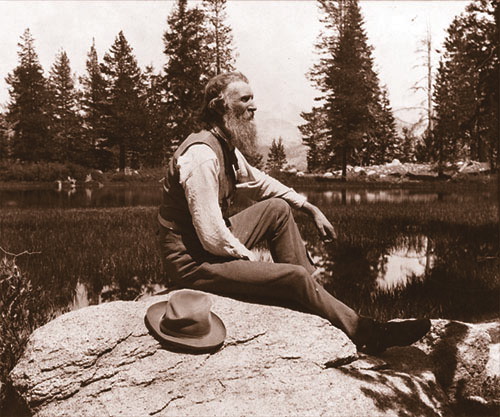

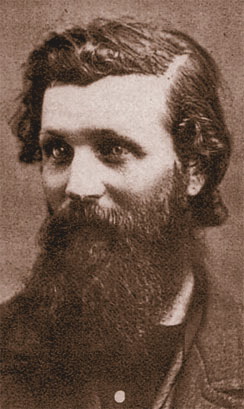 He took course work in botany and geology but did not earn a degree, opting instead to spend summers collecting plants in Canadian woods--in part to avoid military service in the U.S. Civil War. After a stint working in a sawmill, Muir came back home in 1866 and took work as an industrial engineer in Indianapolis. There he polished his mechanical skills at a carriage parts factory until suffering a potentially debilitating injury when a file pierced his eyeball. During four weeks of sitting in a dark room with a patch over his eye, his wound somehow healed. Muir vowed to make good use of his restored vision by returning to the outdoor life and his love of plants.
He took course work in botany and geology but did not earn a degree, opting instead to spend summers collecting plants in Canadian woods--in part to avoid military service in the U.S. Civil War. After a stint working in a sawmill, Muir came back home in 1866 and took work as an industrial engineer in Indianapolis. There he polished his mechanical skills at a carriage parts factory until suffering a potentially debilitating injury when a file pierced his eyeball. During four weeks of sitting in a dark room with a patch over his eye, his wound somehow healed. Muir vowed to make good use of his restored vision by returning to the outdoor life and his love of plants.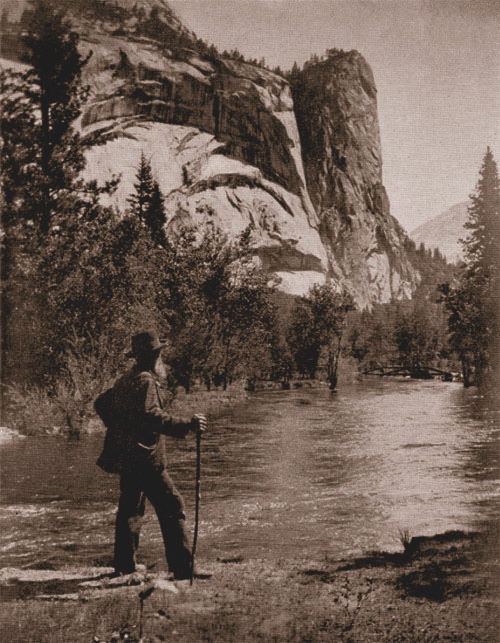
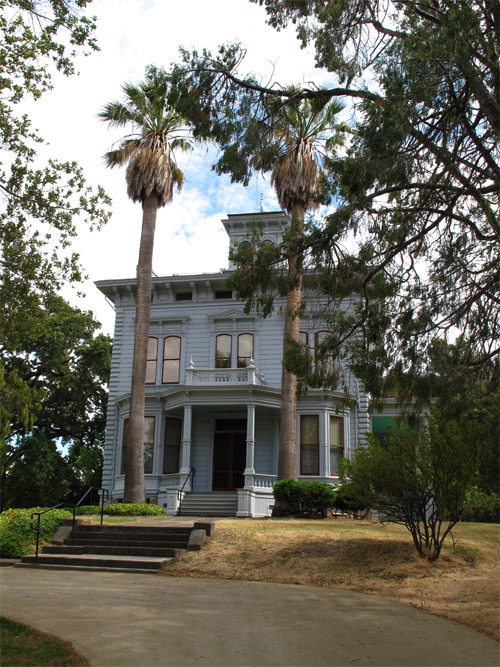
 and invited politicians and journalists to see the devastating results of grazing. In 1890 the federal government did finally place restrictions on the use of the area but left enforcement in the hands of the state of California. This resulted in mismanagement that did little to protect local habitats, and it was not until Theodore Roosevelt came to visit in 1903 that conditions began to improve. Muir and the president explored much of the region and went camping in some of Yosemite's most remote hills and valleys (above right), where Roosevelt was stunned by the overall grandeur of Yosemite and its Giant Sequoias (below). Upon returning to Washington the Roosevelt quickly worked to insure federal protection of the area, resulting in national park designation in 1906.
and invited politicians and journalists to see the devastating results of grazing. In 1890 the federal government did finally place restrictions on the use of the area but left enforcement in the hands of the state of California. This resulted in mismanagement that did little to protect local habitats, and it was not until Theodore Roosevelt came to visit in 1903 that conditions began to improve. Muir and the president explored much of the region and went camping in some of Yosemite's most remote hills and valleys (above right), where Roosevelt was stunned by the overall grandeur of Yosemite and its Giant Sequoias (below). Upon returning to Washington the Roosevelt quickly worked to insure federal protection of the area, resulting in national park designation in 1906.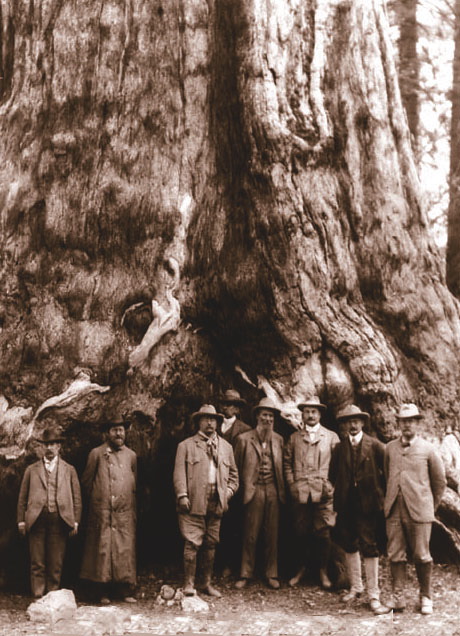
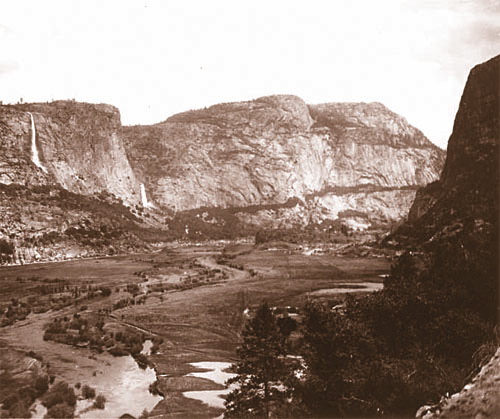
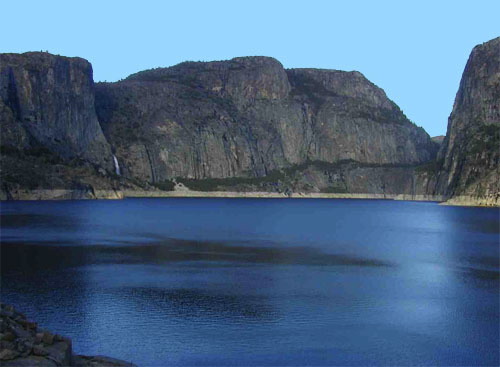
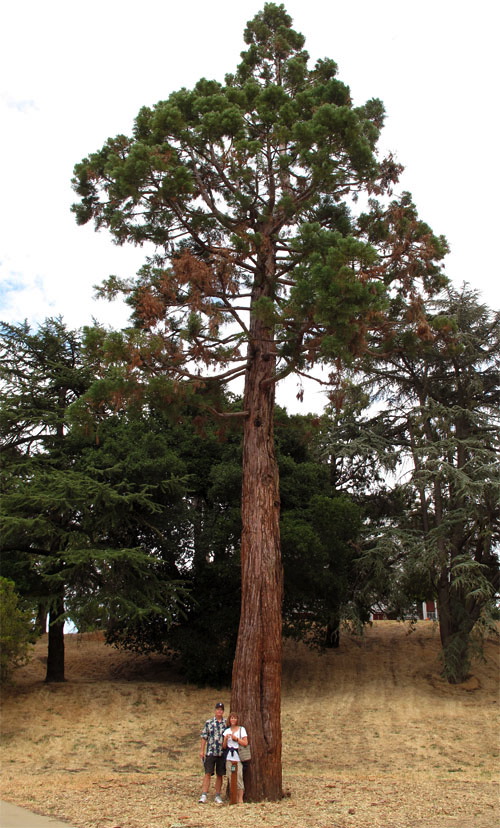
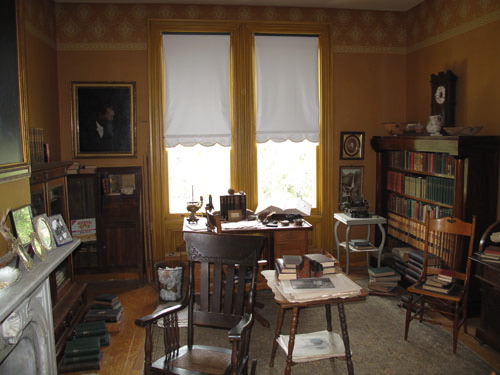




 Please report your
Please report your